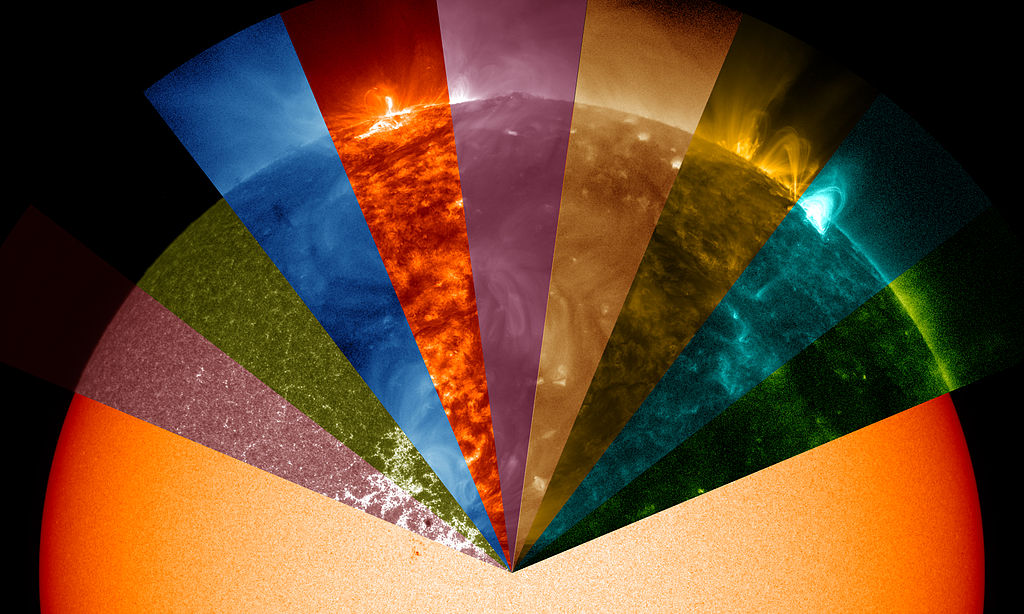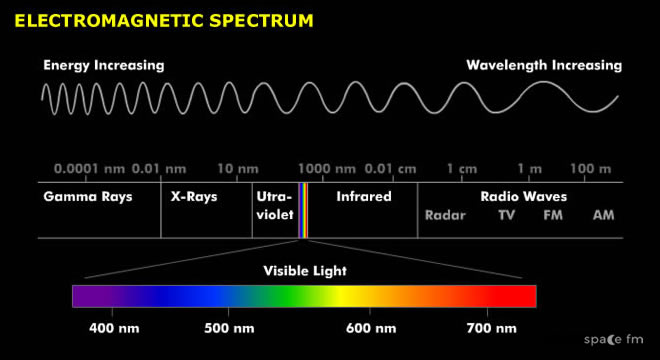Wavelengths of the Sun
10.9 - Understand the different appearance of the Sun when observed using radiation from the different regions of the electromagnetic spectrumHumans see visible light. This is just one part of the electromagnetic spectrum. The Sun emits light in frequencies across this spectrum. By using instruments that operate in these frequencies, scientists can study the Sun and its behaviour.
Without these observations it would be difficult to study sunspots in great detail, flares or even the surface of the Sun with accuracy.
As well as infrared, ultraviolet, x-ray observations, usually conducted at high altitude or in space, other less well-known wavelengths exist. As explained on the Safety Page, H-Alpha is a specific wavelength in the visible part of the spectrum. It allows astronomers to study the Sun's surface as well as nebulae. Optical filters are attached to a telescope (by experienced astronomers) allowing the observer to study the Sun. Calcium-K is a similar filter which allows us to observe on wavelengths that operate only on these frequencies.
WARNING: Never view the Sun directly with a telescope or binoculars
See Also
Did you know?
The Sun is a star in our galaxy, the Milky Way. It takes 225 million Earth years for the Sun to revolve around the galaxy.






 | © All Rights Reserved |
| © All Rights Reserved |